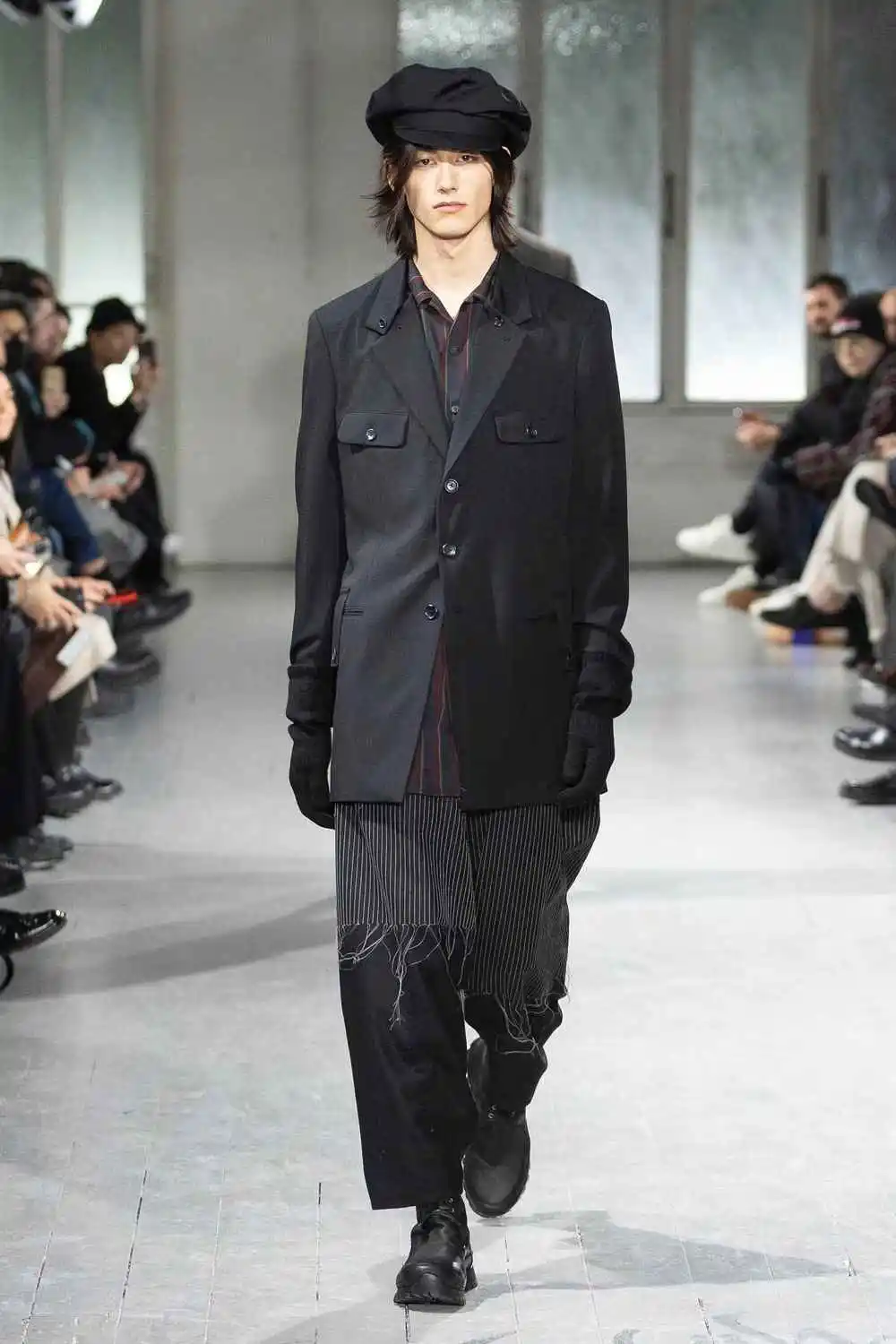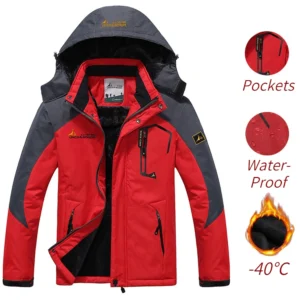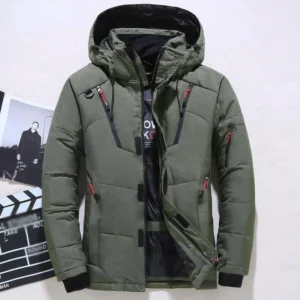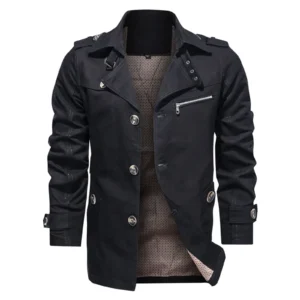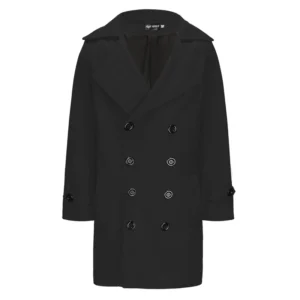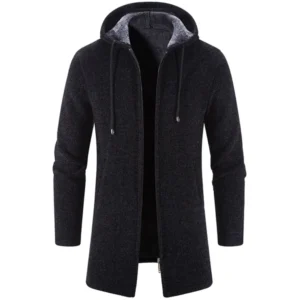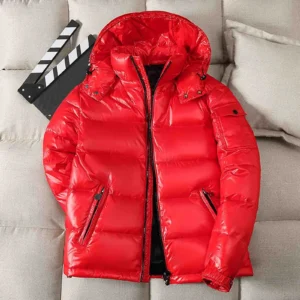When winter approaches, the eternal question resurfaces: which coat will best serve you through the cold months ahead? Long wool coats and winter trench coats represent two distinct yet equally timeless approaches to winter protection. Both have carved their place in fashion history and continue to be sought-after staples in men’s wardrobes.
The dilemma between these two classics isn’t merely about style—though that certainly matters—but about finding the perfect balance between warmth, protection, and versatility. Each coat type brings its own strengths to the table, addressing different needs and preferences.
In this guide, we’ll explore the unique characteristics of both long wool coats and winter trench coats to help you make an informed decision. Whether you’re navigating city streets through freezing temperatures or seeking a sophisticated layer for milder winter days, understanding the nuances of coat length selection for different body types will help you make the right investment.
Understanding the Long Wool Coat: Classic Elegance Meets Winter Protection
The long wool coat, often referred to as an overcoat, stands as perhaps the most classic winter outerwear option for men. Dating back centuries, these coats evolved from military uniforms to become symbols of sophistication and practical winter protection.
Traditionally extending from just below the knee to mid-calf, these coats create a striking silhouette while providing exceptional coverage against winter elements. The perfect winter coat length varies based on height and proportion, but the extended coverage of wool overcoats offers undeniable advantages in truly cold conditions.
What sets the long wool coat apart is its perfect marriage of formal elegance with genuine cold-weather performance—a combination that has kept it relevant through countless fashion cycles and changing winter wardrobes.
The Material Composition: Why Wool Reigns Supreme for Winter
When it comes to natural cold-weather protection, few materials can compete with wool. Quality wool coats typically contain:
- Virgin wool: First-sheared wool that hasn’t been processed before, offering maximum insulation and softness
- Merino wool: Finer, softer fibers that provide exceptional warmth without the bulk or scratchiness of regular wool
- Cashmere blends: Incorporating the ultimate luxury fiber for incredible softness and lightweight warmth
- Wool-synthetic blends: Often featuring 80-90% wool with small percentages of nylon or polyester for added durability and structure
What makes wool exceptional for winter is its natural structure. The crimped, scaly fibers create countless tiny air pockets that trap body heat while still allowing moisture vapor to escape. This means wool provides remarkable warmth while remaining breathable—preventing the clammy feeling often experienced with synthetic materials.
The differences between merino wool versus standard wool coats are significant when considering comfort against the skin and weight-to-warmth ratio. Merino’s finer fibers eliminate the itchiness sometimes associated with wool while maintaining excellent temperature regulation.
Design Features: What Makes a Classic Wool Coat Distinctive
The long wool coat’s enduring appeal comes from several distinctive design elements:
- Length: Typically ranging from knee-length (38-40 inches) to below-knee (42-45 inches), providing substantial coverage
- Silhouettes: Ranging from fitted designs that emphasize the waist to straight, boxy cuts that accommodate layering
- Lapel styles: Usually featuring wide notched lapels (casual/business) or peaked lapels (more formal)
- Closure types: Single-breasted designs with 3-4 buttons provide clean lines, while double-breasted configurations with 6-8 buttons offer additional warmth and wind protection
The appropriate coat length for men depends on factors including height and intended use. Taller men can confidently wear longer styles, while shorter men might prefer knee-length versions to maintain proportion.
Quality wool coats feature thoughtful interior construction with full linings (often silk or satin for dress coats, or more practical polyester for everyday wear), inside pockets, and sometimes additional insulation layers for extreme cold protection.
Advantages of Long Wool Coats in Winter Weather
Long wool coats offer several significant benefits that explain their enduring popularity:
- Superior insulation: Natural wool fibers provide exceptional warmth even in below-freezing temperatures, often comfortable down to 10-20°F (-12 to -6°C) without excessive layering
- Natural moisture management: Wool can absorb up to 30% of its weight in moisture without feeling wet, keeping you dry in light snow or drizzle
- Breathability: Prevents overheating during transitions between outdoor cold and heated indoor environments
- Wind resistance: The dense weave and substantial weight naturally block wind penetration
- Durability: Quality wool coats can last decades with proper care, making them excellent investment pieces
- Formal versatility: Appropriate for business, formal events, and elevated casual occasions
For those seeking premium options, exploring long wool coat collections reveals the range of styles available, from classic Chesterfields to more contemporary interpretations.
Limitations to Consider Before Purchasing
Despite their many advantages, wool overcoats do have certain limitations worth considering:
- Weight: Quality wool coats typically weigh between 4-7 pounds (1.8-3.2 kg), which can feel substantial during extended wear
- Limited water resistance: While wool naturally repels light moisture, prolonged exposure to heavy rain will eventually saturate the fabric
- Specialized care: Most require dry cleaning rather than machine washing, increasing maintenance costs
- Movement restriction: The structured design and heavier materials can somewhat limit range of motion compared to technical outerwear
- Warming period: Wool coats often need some wearing time before they warm up fully, unlike immediate warmth from down insulation
For those interested in exploring various options, browsing different wool coat styles can provide a better understanding of the available variations in design and functionality.
Exploring the Trench Winter Coat: Iconic Style Adapted for Cold Weather
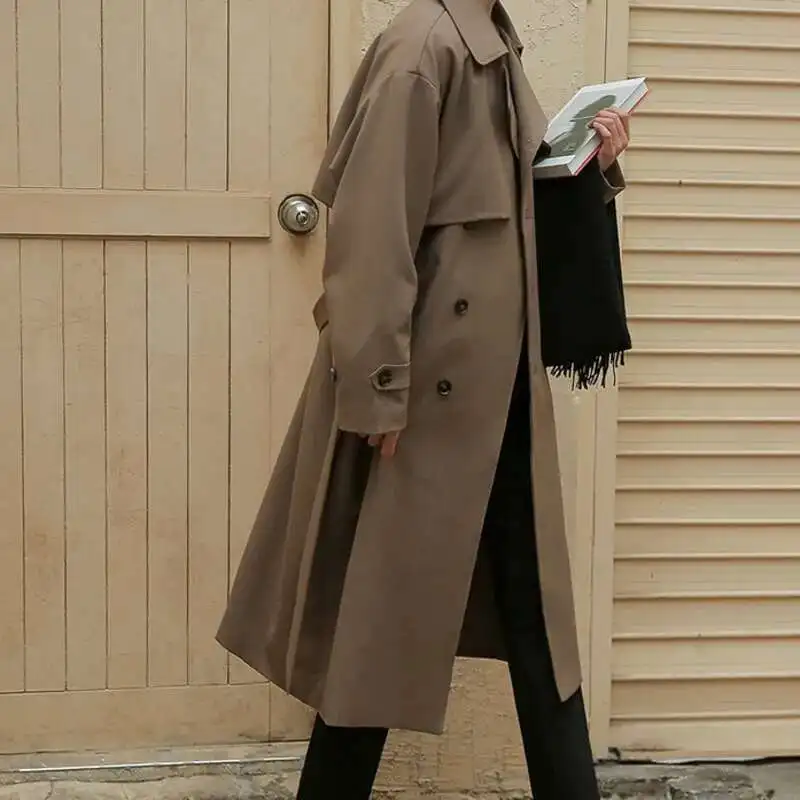
The trench coat’s journey from military origins to fashion icon is well documented, but its evolution into a winter-ready garment represents a particularly practical transformation. Originally designed for British officers in the First World War, the traditional trench coat has been reimagined with winter functionality through thoughtful adaptations.
Winter trench coats maintain the iconic silhouette—characterized by shoulder epaulets, storm flaps, and belted waist—while incorporating additional insulation and weather protection. The result is a versatile piece that bridges the gap between classic style and modern winter performance.
For those exploring various winter outerwear options, Metro Cloak’s winter coat collection demonstrates how traditional designs have been updated for contemporary winter needs without sacrificing their timeless appeal.
Winter-Ready Materials: Beyond Traditional Gabardine
While classic trench coats are typically made from gabardine or cotton twill, winter versions incorporate several material innovations:
- Wool-blend gabardine: Adding wool to traditional gabardine improves insulation while maintaining the distinctive texture
- Technical fabrics: Modern winter trenches often feature tightly woven synthetic fabrics with water and wind-resistant properties
- Waterproof treatments: DWR (Durable Water Repellent) finishes help water bead off rather than soak in
- Enhanced linings: Winter versions feature insulating linings such as:
- Quilted thinsulate for warmth without bulk
- Down or synthetic fill in removable liners
- Fleece or flannel lining for comfort against colder temperatures
The choice between wool versus down insulation represents a significant decision point when selecting a winter trench. Wool-insulated versions offer reliable warmth that performs well even when damp, while down provides exceptional warmth-to-weight ratio but requires better waterproofing to maintain performance.
Distinctive Elements: The Anatomy of a Winter Trench Coat
Winter trench coats maintain several hallmark design elements while adapting others for cold weather:
- Raglan sleeves: The signature shoulder design allowing greater freedom of movement, especially important when wearing layers
- Storm flaps: Originally designed to prevent rain from entering the coat, they now provide additional wind protection
- Adjustable collar: Typically higher than traditional trenches, often with the ability to close completely around the neck
- Removable components: Many feature detachable wool or insulated linings that can be added or removed depending on temperature
- Belt and D-rings: The defining waist belt helps trap warmth while D-rings (originally for carrying military equipment) maintain authentic styling
- Length variation: Winter trenches often run slightly longer (typically 40-45 inches or 101-114 cm) than their classic counterparts for added protection
Those interested in classic outerwear might explore various overcoat options and styles to compare different approaches to winter protection.
Benefits of Winter Trench Coats in Various Conditions
Winter trench coats offer several distinct advantages that set them apart:
- Excellent water resistance: The tight weave and often treated fabrics provide superior protection in wet, slushy conditions
- Wind protection: Storm flaps and adjustable closures effectively block wind penetration
- Adaptability: Removable liners allow the same coat to function across fall, winter, and spring
- Layering flexibility: The looser cut accommodates everything from light sweaters to substantial layers underneath
- Transitional elegance: Appropriate for business settings while functional enough for everyday wear
- Mobility: Less restrictive than heavier wool coats, allowing easier movement when commuting or active
For those considering different outerwear lengths, understanding the practical differences between short versus long coats can help determine which style better suits your daily activities and regional climate.
Potential Drawbacks to Be Aware Of
Winter trench coats do come with certain limitations:
- Moderate insulation: Even winter-adapted trenches may not provide sufficient warmth for temperatures below 20-25°F (-6 to -4°C) without substantial layering
- Maintenance needs: Waterproof treatments require periodic renewal to maintain effectiveness
- Feature complexity: Belts, buckles, and storm flaps add style but can sometimes feel cumbersome during quick on/off situations
- Quality variation: The popularity of trench coats has led to widely varying quality levels; lower-quality versions may lack genuine weather protection
- Formal limitations: Despite their versatility, winter trenches generally read as slightly less formal than wool overcoats for very dressed-up occasions
For those needing additional warmth, exploring insulated coat options can provide guidance on supplementary layers or alternative styles for extreme cold.
Head-to-Head Comparison: Making Your Decision

When deciding between these two winter classics, a direct comparison of key factors can be illuminating:
| Feature | Long Wool Coat | Winter Trench Coat |
|---|---|---|
| Warmth Rating | Excellent (effective to 10-20°F/-12 to -6°C) | Good (effective to 25-35°F/-4 to 2°C with layering) |
| Weather Protection | Moderate water resistance, excellent wind blocking | Superior water resistance, good wind protection |
| Weight | Heavier (4-7 lbs/1.8-3.2 kg) | Lighter (2.5-4 lbs/1.1-1.8 kg) |
| Formality | Highest formality, suitable for business and formal events | Business appropriate, slightly less formal |
| Care Requirements | Typically dry clean only | Often dry clean, some technical fabrics may be washable |
| Price Range (Quality) | $300-$1,500+ | $250-$1,200+ |
| Typical Lifespan | 10-20+ years with proper care | 7-15+ years depending on material |
Understanding how warm wool coats remain in winter helps contextualize their performance against winter trenches, which typically require more layering for equivalent warmth in very cold conditions.
Climate Considerations: Matching Your Coat to Your Weather
Your local climate should significantly influence your coat decision:
Cold, dry winters: Long wool coats excel in these conditions, providing superior insulation without moisture concerns. Their weight and warmth are advantages rather than drawbacks.
Wet, milder winters: Winter trench coats shine in regions with temperatures rarely dropping below freezing but experiencing significant precipitation. Their water resistance and adaptability prove invaluable.
Variable conditions: If your winter includes both precipitation and serious cold snaps, a winter trench with substantial removable lining offers the most versatility.
Extreme cold: For consistently frigid environments (below 10°F/-12°C), specialized heavy winter coats might outperform both traditional options, though a heavily lined wool coat remains a strong contender.
Lifestyle Factors: Finding Your Perfect Match
Your daily activities and routines should influence your coat choice:
Business professional environments: If you wear suits daily, a wool overcoat provides the most appropriate complement, maintaining formal elegance while offering necessary warmth.
Active urban lifestyle: For those who walk extensively or use public transportation, the trench coat’s lighter weight and greater freedom of movement may prove more comfortable for daily wear.
Car commuters: Those who transition quickly between heated cars and indoor environments might prefer the easy on-off nature of trench coats, which often feel less cumbersome during brief outdoor exposures.
Frequent travelers: Winter trenches typically pack more efficiently and recover better from being folded, making them practical companions for business or leisure travel.
Styling Your Winter Coat: Maximizing Versatility
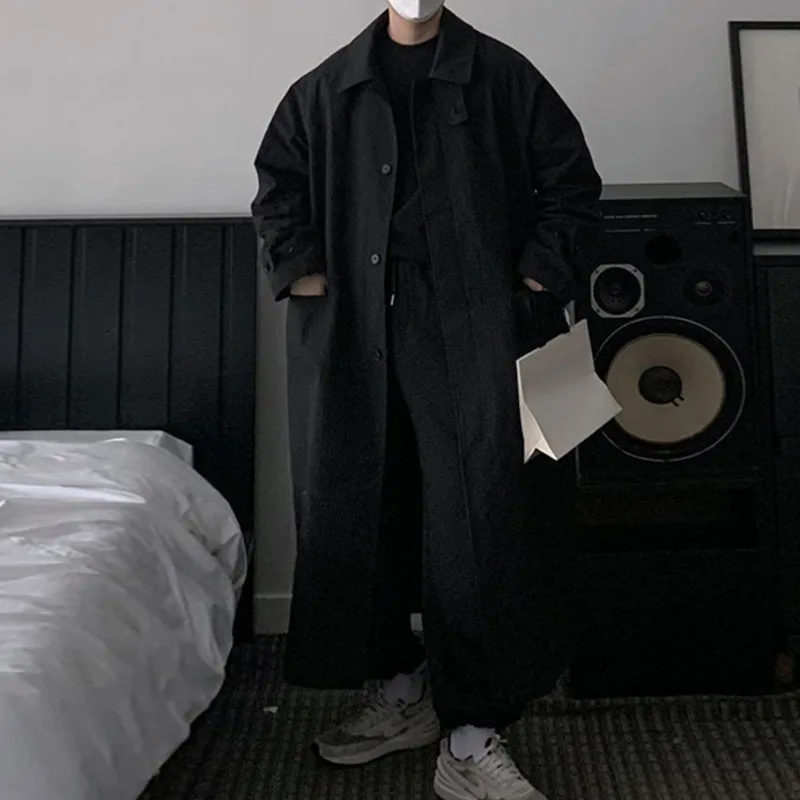
Both coat styles offer remarkable versatility when approached with thoughtful styling:
Long wool coat styling approaches:
* Business formal: Pair with suits, dress shoes, and a cashmere scarf for timeless professional elegance
* Smart casual: Combine with dark denim, a merino sweater, and leather boots for elevated weekend wear
* Contemporary twist: Layer over monochromatic athleisure with minimalist sneakers for a modern urban look
Winter trench coat styling approaches:
* Business ready: Wear over suits or separates with the belt tied properly for a sharp professional appearance
* Casual refinement: Combine with chinos, a chunky sweater, and chelsea boots for sophisticated weekend style
* Layered approach: Use as an outer shell over a quilted vest or light down jacket for added warmth without bulk
For comprehensive guidance, exploring the ultimate guide to styling long overcoats can provide additional inspiration for maximizing your coat’s versatility across different dress codes and occasions.
Mens Heavy Winter Coat, Mens Insulated Coat, Mens Parka Coat
Price range: $175.52 through $237.36 Select options This product has multiple variants. The options may be chosen on the product pageMens Big and Tall Winter Coats, Mens Down Coat, Mens Hooded Winter Coat, Mens Puffer Coat
Price range: $126.44 through $217.01 Select options This product has multiple variants. The options may be chosen on the product pageMens Big and Tall Winter Coats, Mens Hooded Winter Coat
Price range: $80.32 through $106.68 Select options This product has multiple variants. The options may be chosen on the product pageMens Double Breasted Pea Coat, Mens Wool Blend Coat, Mens Wool Pea Coat
Price range: $136.84 through $157.36 Select options This product has multiple variants. The options may be chosen on the product pageMens Cashmere Overcoat, Mens Hooded Winter Coat, Mens Wool Blend Coat
Price range: $128.72 through $139.68 Select options This product has multiple variants. The options may be chosen on the product pageMens Hooded Winter Coat, Mens Insulated Coat, Mens Puffer Coat, Mens Quilted Coat
Price range: $139.88 through $177.72 Select options This product has multiple variants. The options may be chosen on the product page
Accessorizing for Both Function and Style
The right accessories enhance both the performance and appearance of your winter coat:
Functional-yet-stylish additions:
* Scarves: Cashmere or wool scarves in complementary or contrasting colors add both warmth and visual interest
* Gloves: Leather gloves (often lined with cashmere or wool) provide the ideal balance of protection and sophistication
* Hats: Consider wool fedoras or cashmere beanies depending on the formality of your coat and outfit
* Footwear: Ensure your shoes or boots provide appropriate traction and protection to complement your coat’s weather resistance
When selecting accessories, consider materials that enhance rather than compete with your coat’s fabric and style. Texture contrasts (smooth leather gloves with a textured wool coat, for example) create visual interest while maintaining harmony.
Making Your Investment: Quality Indicators and Pricing
When investing in either coat style, certain quality markers justify higher price points:
Wool coat quality indicators:
* Material composition: Look for at least 80% wool content, with higher percentages generally indicating better quality
* Weight and hand-feel: Quality wool has substantial weight and a smooth, soft hand-feel
* Construction details: Fully canvassed construction, hand-sewn buttonholes, and pick-stitching along edges indicate superior craftsmanship
* Lining quality: Full silk or bemberg lining with proper installation (no pulling or puckering)
Winter trench coat quality indicators:
* Fabric density: Tightly woven fabric that prevents light penetration when held up
* Waterproofing: Effective water beading on the surface when tested
* Hardware durability: Solid metal buckles and buttons that feel substantial
* Seam sealing: Properly taped seams for genuine weather protection
* Lining attachment: Secure, even installation of any removable linings
Typical price ranges:
* Entry-level quality: $200-$350
* Mid-range quality: $350-$700
* Premium quality: $700-$1,500+
* Luxury designer: $1,500+
Care and Maintenance: Protecting Your Winter Coat Investment
Proper maintenance significantly extends the life of both coat types:
Wool coat care essentials:
* Brush regularly with a garment brush to remove surface dirt and debris
* Allow 24 hours rest between wearings to maintain shape and allow moisture to evaporate
* Use wide, shaped hangers to preserve shoulder structure
* Dry clean only 1-2 times per season (excessive cleaning can damage wool fibers)
* Store clean and fully dry in breathable garment bags during off-seasons
Winter trench coat maintenance:
* Reapply waterproofing treatments annually or when water stops beading on the surface
* Clean according to material specifications (some technical fabrics allow gentle machine washing)
* Ensure complete drying before storage to prevent mildew
* Maintain hardware with occasional light oil application to moving parts
* Store unbelted to avoid permanent creasing
Which Winter Coat Reigns Supreme for Your Needs?
The ideal winter coat ultimately depends on your specific circumstances. Long wool coats offer unparalleled warmth and formal elegance but require more careful maintenance and perform less effectively in wet conditions. Winter trench coats provide superior weather versatility and adaptability across temperature ranges but may require additional layering in extreme cold.
For many men, the ideal solution might eventually include both: a wool overcoat for formal occasions and the coldest, driest days, and a winter trench for wet conditions and situations demanding greater versatility.
Whichever you choose, investing in quality rather than compromising on construction or materials will ensure your coat remains a functional wardrobe cornerstone for many winters to come. The right winter coat isn’t merely a seasonal purchase—it’s a long-term investment in both comfort and style that can define your winter presence for years.

